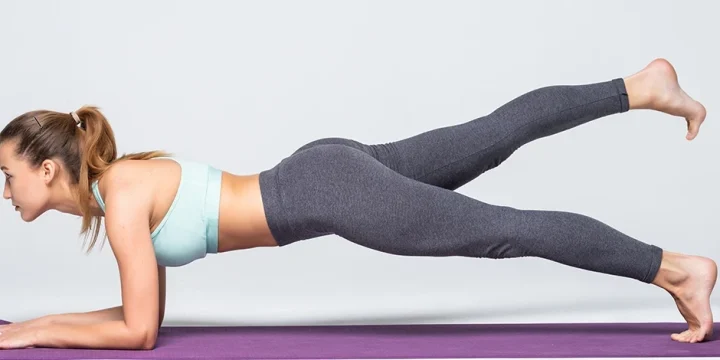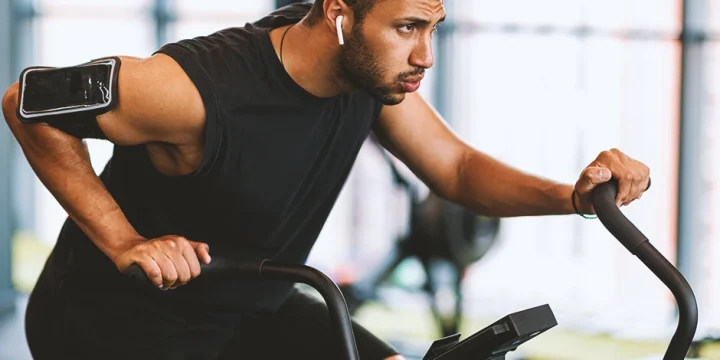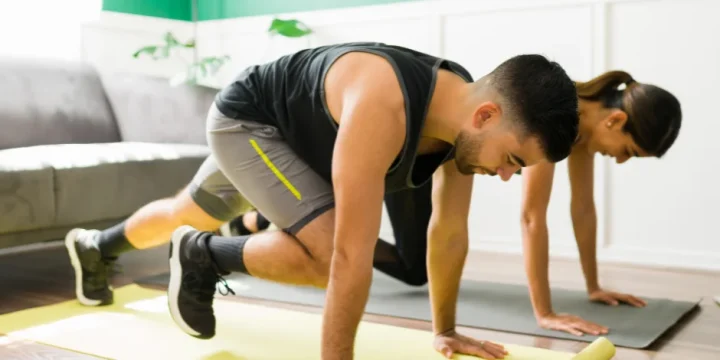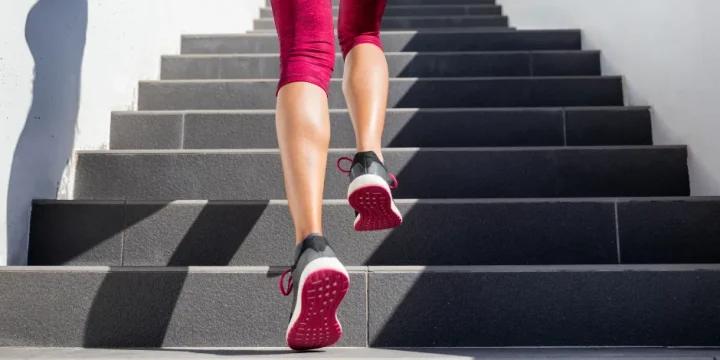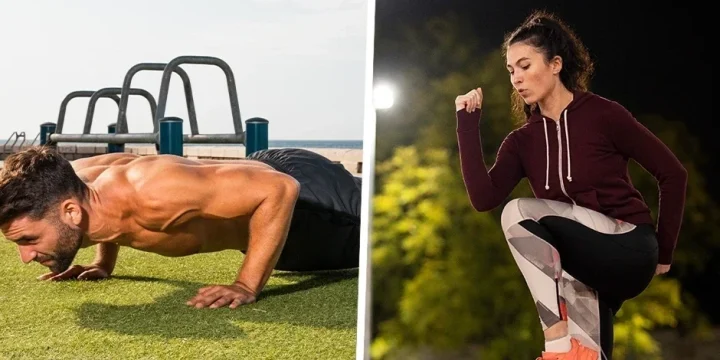High-Intensity Interval Training (HIIT) has been shown by many studies as an effective way of burning calories when done regularly; however, HIIT can result in burnout if not done in moderation.
In my experience, mixing in low-intensity workouts regularly has been key to maintaining muscle tone and cardiovascular fitness without overexertion.
So, I delve into research to give you this complete guide for low-intensity cardio workouts. Let’s roll.
Quick Summary
What Is A Low-intensity Cardio Workout?

A low-intensity cardio workout is done at a slow and steady pace. It’s a low-impact aerobic exercise performed at 50–70% of your maximum or target heart rate.
Compared to high-intensity cardio, which you can only perform for short periods, you can perform lower-intensity workouts over a steady or extended period of about 10–60 minutes.
Though opposite to high-intensity cardio training, low-intensity exercise compliments it and is an excellent addition to your workout regimen.
Through both research and firsthand coaching experience, I've seen how low-intensity cardio increases blood flow, reduces stress, lowers heart disease risk, and aids in fat burning and weight loss.
Well, let's take a look at its health benefits in a little while.
Regardless of your fitness level – a point I emphasize to all my clients – low-intensity, steady-state exercise is beneficial and adaptable.
Target Heart Rate for a Low-Intensity Workout
Your target heart rate for low-intensity exercise should be in the low-intensity zone, at 50–70% of your maximum heart rate.
To know your maximum heart rate (the maximum number of times your heart beats in a minute of maximum physical activity), subtract your age from 220. So, if you're 25, your maximum is 195.
Therefore, your target heart rate should be 98 (50% of your max) to 137 (70% of your maximum heart rate) when working out in the low-intensity zone.
6 Best Low-Intensity Cardio Workouts
Based on my expertise and personal practice, crafting a personalized low-intensity cardio plan according to your fitness level and goals not only enhances workout effectiveness but also aids in safely ramping up intensity, keeping motivation high.
Here are six must-try low-intensity cardio exercises you can choose from:
1. Walking
Great for non-runners, walking is a simple cardio choice. It boosts heart and lung strength, burns calories, lowers heart disease risk, energizes, and lifts your mood.
2. Jogging

To fast-track fitness and avoid workout boredom, jogging is your go-to. It elevates your cardio health and keeps your weight in check.
Related: Jogging vs Sprinting - Which One is Better?
3. Swimming
An efficient low-intensity workout, swimming sculpts your figure and burns 300 to 450 calories per session.
"Swimming is a full-body workout that targets the legs, upper body, and core, especially your lats — the muscles of your middle back — and triceps."
– Natasha Van Der Merwe, Director of Triathlon at Austin Aquatics & Sports Academy in Austin, Texas
4. Rowing

Rowing bolsters cardiovascular health and muscle strength. It's a dual cardio and strength workout, enhancing stamina, boosting immunity, and aiding weight loss. Plus, it's suitable for all fitness levels.
5. Cycling
Cycling is not just physical—it's a mental health booster. It strengthens your heart and lower back while providing scenic views, thought-processing time, and opportunities to socialize.
6. Yoga

Some yoga forms, known as "cardio yoga," are effective aerobic exercises. They enhance breathing, calm the mind, and improve flexibility and balance.
Blending low-intensity cardio with yoga or strength training enriches your fitness regimen, offering a well-rounded approach that bolsters endurance and enhances flexibility.
Benefits Of Low-intensity Cardio Exercises

From my professional and personal journey, I've seen numerous benefits of low-intensity cardio, including the following.
Helps Lower Fatigue
Feeling constantly drained? Skip the energy bar and opt for a walk or jog. Studies in the Psychotherapy and Psychosomatics journal show that low-to-moderate exercises can boost energy by 20% and cut fatigue by 65% [1].
Plus, they release endorphins, increasing oxygen levels and energy.
Allows Faster Recovery

Ditch the couch post-workout. Steady cardio quickens recovery by boosting blood flow and reducing lactic acid, easing muscle pain and rebuilding strength.
Helps in Fat Loss
Fat needs more oxygen to burn than carbs. Low-intensity workouts supply ample oxygen for fat burning. Dr. Matt Tanneberg of Body Check notes that post-calorie burn cardio tackles extra fat. Remember, burning more than you consume is key to weight loss.
Lowers Risks of Injury

High-intensity workouts, though quick, can increase injury risks, as per the Journal of Sports Medicine and Physical Fitness [2]. Blend HIIT with low-impact cardio for safety.
Trainer Lara Gray of The Ginger Guru suggests swimming, water aerobics, and walking for those with joint issues, offering full-range motion without strain. To match HIIT results, extend the low-intensity exercise duration.
Increases Endurance
Low-impact cardio enhances breathing and heart rates, increasing stamina for longer physical activity and preparing you for higher-intensity workouts.
Impact on Longevity and Aging
Regular low-intensity cardio has a profound impact on aging, aiding in maintaining muscle mass, promoting joint health, and preventing age-related conditions, thereby significantly contributing to a healthier, longer life.
How Often Should You Do Low-intensity Workouts?
For those of my clients who focus more on building healthy habits than specific fitness goals, I recommend 30 to 60 minutes of low- to moderate-intensity cardio two to three times a week.
You can do low-intensity workouts every day or if you're doing HIIT workouts, try to mix low-impact cardio two to three times a week.
Related: Cardio After or Pre Lifting Weights?
FAQs
Should You Do More Cardio After High-Intensity Interval Training?
You shouldn’t do more cardio after HIIT, because HIIT is a cardio exercise in itself, and it's intense training.
You may try to mix it up with low-impact cardio and only train HIIT two or three times a week.
Can You Lose Extra Weight by Walking 30 Minutes a Day?
Yes. Physical activities, such as doing a brisk walk for 30 minutes a day, helps with weight control because it helps you torch calories.
But, to lose weight, you need to burn more calories than you consume.
References:
- https://pubmed.ncbi.nlm.nih.gov/18277063
- https://pubmed.ncbi.nlm.nih.gov/30758171
About The Author
You May Also Like

